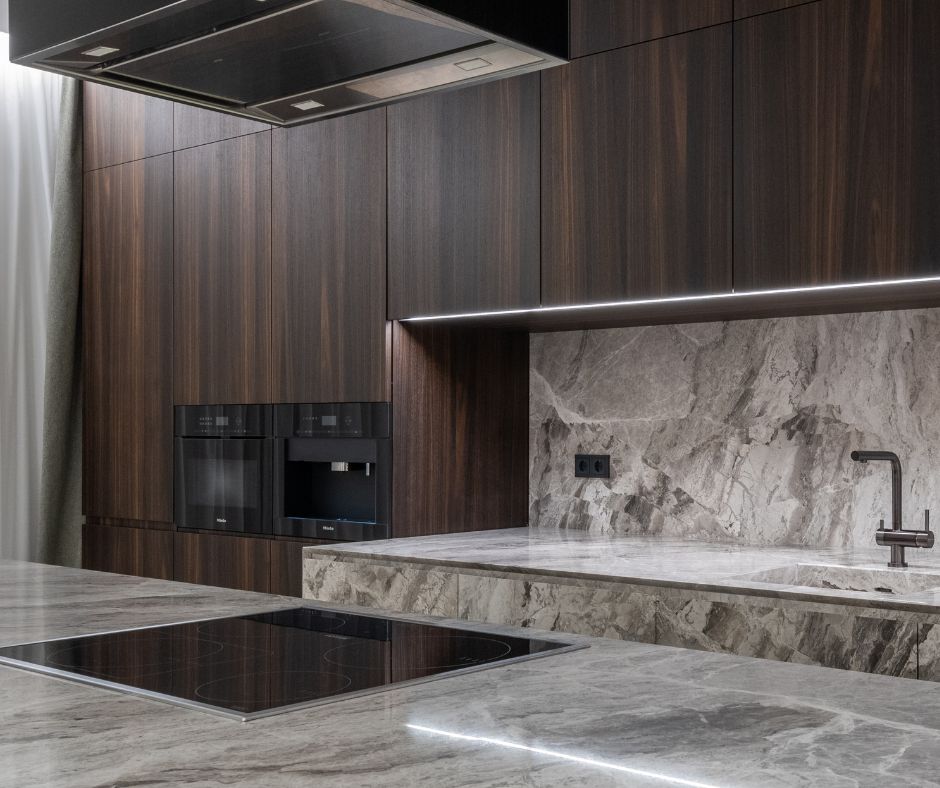Innovative kitchens are the breeding ground for exciting new culinary traditions. Although induction cooking technology may appear to be a cutting-edge advancement, its roots extend back to the early 20th century. Captivating demonstrations from the 1930s showcased the astonishing capability to boil water using magnetic energy without any visible heat source, leaving audiences in awe. However, it is only in recent decades, bolstered by remarkable strides in technology, efficiency, and design, that induction cooktops have firmly established their position in modern kitchens.
Today, a growing number of home chefs and culinary enthusiasts are embracing induction cooking for its impressive combination of sleek aesthetics, exceptional precision, and unmatched energy efficiency. This method of cooking not only accelerates meal preparation but also transforms the art of home cooking by merging the science of heat management with culinary creativity in every dish crafted on its stylish, polished surface. The right induction cooktop can rival the speed of a microwave when it comes to creating delicious family meals!
Enhancing Taste and Nutrition with Precision Cooking Techniques
Unlike traditional gas or electric ranges, induction cooktops directly heat cookware through the application of electromagnetic energy. This revolutionary approach eliminates wasted heat, prevents burnt edges, and offers superior control over both low and high temperatures. When you can manage heat with such accuracy, your ingredients retain more of their natural moisture, flavour, and nutritional integrity. Be it flash-searing proteins, gently simmering sauces, or rapidly blanching vegetables, induction cooking simplifies the process of achieving perfect results, steering clear of overcooked meals and nutrient loss.
Sleek and Stylish Induction Cooktops: Optimising Space and Reducing Stress
In kitchens where every square centimetre is at a premium, induction cooktops shine not only in performance but also in their visual appeal. Their flat, smooth surfaces seamlessly blend into your countertop, presenting a minimalist aesthetic that creates additional space for food preparation, plating, or even casual dining.
In contrast to conventional gas hobs, which are often accompanied by bulky grates and protruding burners, induction cooktops sit flush with the countertop surface. While ceramic stovetops may present a more elegant appearance, they tend to remain dangerously hot long after cooking has concluded.
Conversely, induction surfaces cool down rapidly once the cookware is removed. The heat is generated through the magnetic interaction between the cooktop and corresponding cookware, rather than emanating from the cooktop itself, which ensures that the glass surface retains considerably less heat. This characteristic not only makes cleaning safer and simpler but also fosters a safer cooking environment, particularly in households with inquisitive children or pets who may venture onto kitchen counters.
The result? A cooler kitchen with cleaner lines and enhanced flexibility—ideal for modern cooks who value both aesthetics and functionality.

Comprehensive Guide to Choosing the Right Cookware for Induction Cooking
Transitioning to induction cooking may come with a bittersweet realisation—you may need to part ways with some beloved old pans. Since induction technology operates on magnetic energy for heat generation, not every pot and pan will be compatible with this cooking method.
For cookware to function efficiently on an induction cooktop, it must be constructed from ferrous (magnetic) metals, such as cast iron, carbon steel, or magnetic-grade stainless steel. A simple fridge magnet test can ascertain compatibility: place a magnet on the bottom of the pan. If it adheres firmly, you’re good to proceed.
When selecting new cookware, choose pans with a heavy, flat base. This design ensures optimal contact with the cooktop, facilitating even heat distribution, which is critical for achieving perfect browning, succulent roasts, and crispy edges. Additionally, high-quality induction cookware is designed to resist warping over time, thereby maintaining consistent cooking performance for each meal.
Though it may be challenging to relinquish old favourites, consider it an upgrade. In exchange, you gain enhanced control, faster cooking times, and dishes that boast even richer flavours and textures.
Induction Cookware Essentials: Quick Checklist for Success
 Conduct a fridge magnet test—strong adhesion indicates induction compatibility
Conduct a fridge magnet test—strong adhesion indicates induction compatibility Prefer flat-bottom pans for optimal contact and heat distribution
Prefer flat-bottom pans for optimal contact and heat distribution Select cast iron, carbon steel, or magnetic stainless steel cookware
Select cast iron, carbon steel, or magnetic stainless steel cookware Avoid cookware composed solely of copper, aluminium, or glass unless explicitly marked for induction
Avoid cookware composed solely of copper, aluminium, or glass unless explicitly marked for induction Look for the induction symbol (resembling a horizontal coil or a series of loops) stamped on the base or package
Look for the induction symbol (resembling a horizontal coil or a series of loops) stamped on the base or package
Pro Tip: The induction symbol typically resembles a zigzag or spring coil graphic. Spotting it guarantees cookware compatibility.
Crucial Installation Considerations for Your Induction Cooktop
Before you embark on your culinary journey with your new cooktop, it is essential to prioritise several installation elements:
-
Professional Installation Is Crucial: Induction units usually necessitate dedicated electrical circuits and specific clearances. Ensure you engage professionals who understand these requirements.
-
Hire a Licensed Electrician: Wiring a high-powered induction cooktop is not a DIY project.
Learn why hiring a qualified electrician is imperative. -
Ensure Your Power Setup Is Adequate: Certain induction models draw significant power. Before making a purchase, confirm that your wiring meets the cooktop’s specifications.
Proper installation not only guarantees optimal performance but also ensures safety and longevity.
Essential Insights About Induction Cooking
Induction cooking offers more than just speed or safety—it is inherently intelligent. With the right cookware and a professionally installed system, you can create better-tasting meals, richer textures, and healthier options, meal after meal. In contemporary kitchens, precision cooking is not merely desired; it has become the new standard.
Frequently Asked Questions About Induction Cooktops
1. What Makes Induction Cooktops Superior to Gas or Electric Alternatives?
Induction cooktops offer immediate heat control, enhanced energy efficiency, and heightened safety features. Since they heat the cookware directly, meals cook more rapidly with less energy wastage, while the surfaces remain cooler, thus reducing the risk of burns.
2. Can I Use My Existing Pots and Pans on an Induction Cooktop?
Only if they are magnetic. Cookware made from cast iron or magnetic stainless steel is ideal. You can easily check compatibility by placing a magnet on the base—if it adheres firmly, it is suitable for induction use.
3. Does Induction Cooking Affect the Flavour of Food?
Yes, and in a beneficial manner. Because induction cooking allows for precise temperature control, you can sear, sauté, or simmer without overheating, thereby preserving the natural flavours, textures, and nutrients far more effectively than with inconsistent gas or electric heat.
4. Is Special Wiring Necessary for an Induction Cooktop?
Most induction cooktops require a dedicated electrical circuit and specific voltage and amperage configurations. It is essential to have a professional electrician assess and install your wiring to ensure compliance with safety regulations and to guarantee optimal performance.
The post The Secret Ingredient in Modern Kitchens: Induction Cooktops Are Changing the Game appeared first on https://cookinggods.com
The Article Induction Cooktops: The Game-Changer in Modern Kitchens Was Found On https://limitsofstrategy.com

